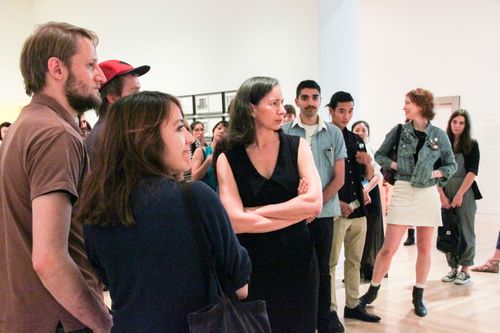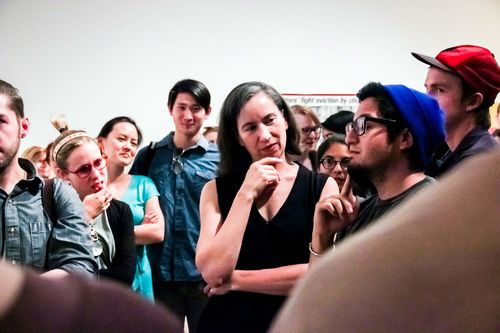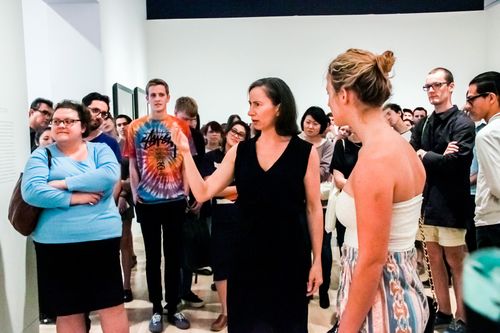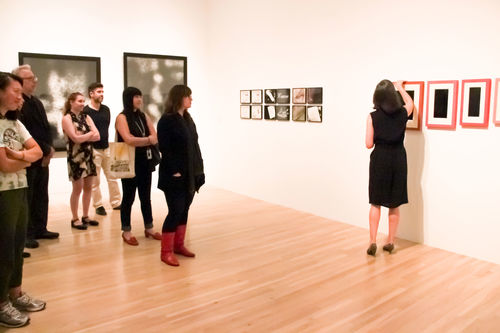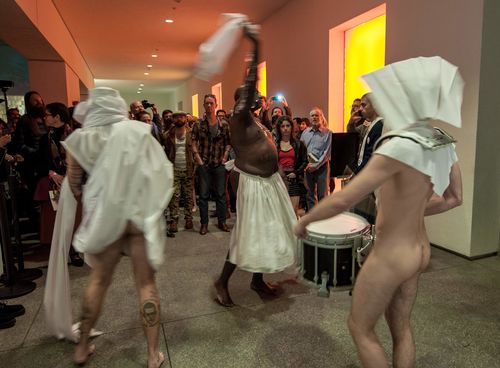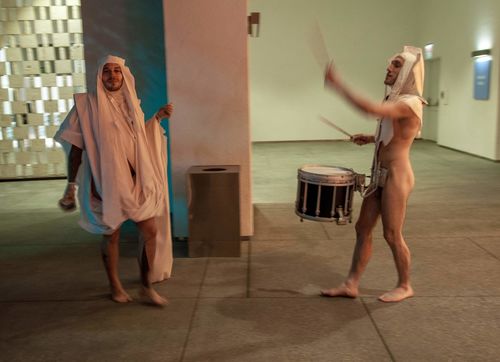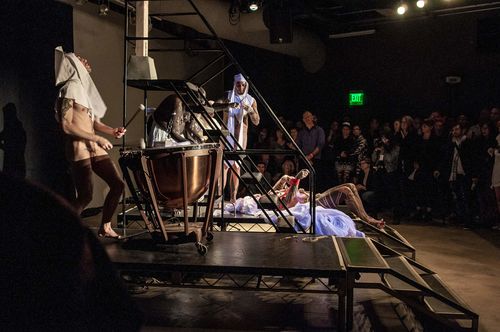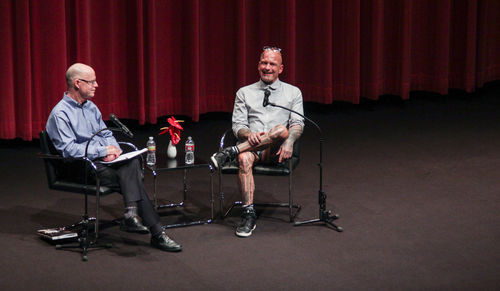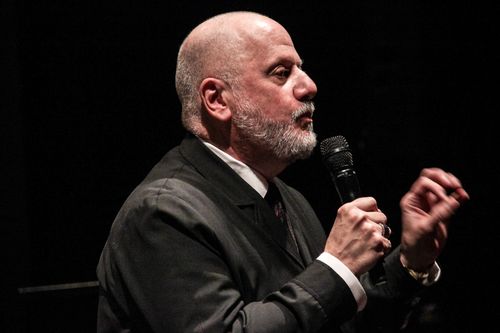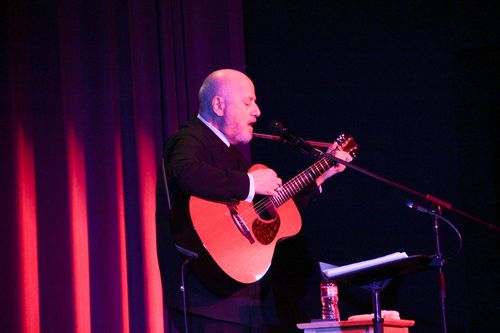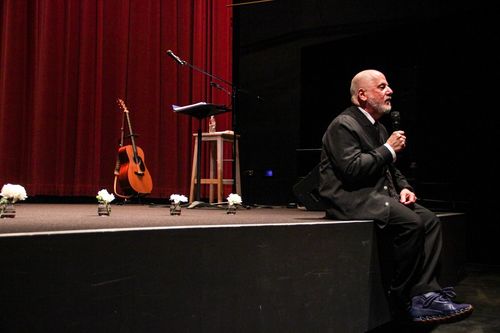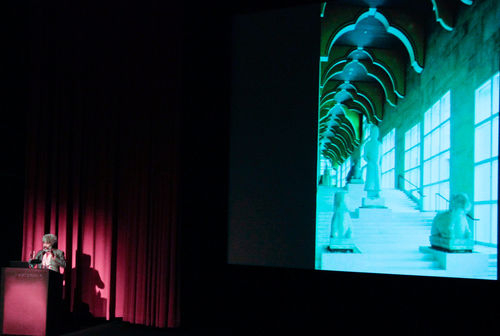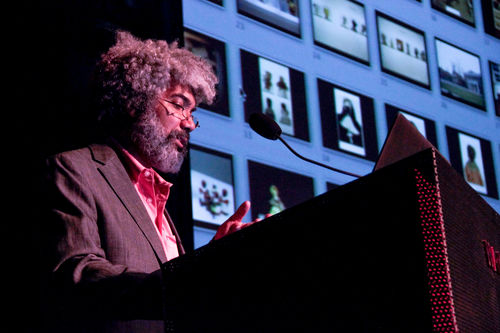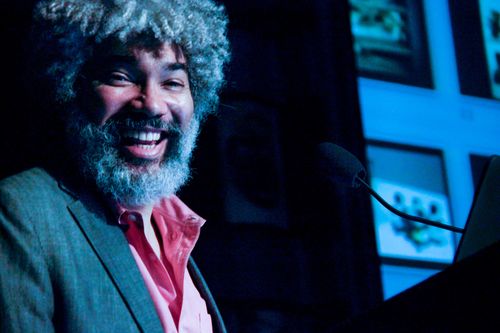Programs
In the early nineteen eighties I was part of a young ambitious group of artists who were disgusted by the alignment of regressive politics in the White House with politics in the art world. All institutions within federal government to museums and galleries were perceived to be driven by national interests, imperialist expansion, profit motive, male supremacy, white supremacy, and heteronormativity. Rigorous analysis of the situation led to tactics of subterfuge and refusal. Still, we were not resigned. —Gregg Bordowitz
Take It or Leave It: Institution, Image, Ideology artists Judith Barry, Dara Birnbaum, Andrea Fraser, and Mary Kelly discuss how social, political, and artistic systems are addressed in their work and whether they envision the idiom of “institutional critique” remaining relevant in the future. Moderated by Take It or Leave It curators Johanna Burton, Keith Haring Director and Curator of Education and Public Engagement at the New Museum, and Anne Ellegood, Hammer senior curator.
Andrea Fraser’s 1991 performance May I Help You? explores the relationship between cultural consumption and social class. During a 15-minute monologue, the performer shifts through six voices representing different perspectives on art. May I Help You? was originally performed at American Fine Arts Co. in New York City by actors posing as gallery staff in an exhibition of Allan McCollum’s Plaster Surrogates. Transposing the work to the galleries housing Take It or Leave It, in which works by both Fraser and McCollum were featured, Fraser performed continuously over the course of two hours.
In his frequently bloody portrayals of life, death, crisis, and fortitude in the time of AIDS, artist Ron Athey calls into question the limits of artistic practice. Originally performed in 1992 as part of Martyrs & Saints, this performance (developed with London-based artists Jon John and Sage Charles) explores issues of gender, body modification, ecstasy, and the Passion Play. Sebastiane was followed by a dialogue with John Killacky, director of the Flynn Center for the Performing Arts, who served as a curator of the Walker Art Center’s performing arts department from 1988 to 1996. Killacky shared his recollections of performances and political moments marked by AIDS, funding battles, and the culture wars of the early 1990s.
Stephen Prina is a multidisciplinary artist as well as a composer and musician who has interpreted works by Beethoven, Schoenberg, Sonic Youth, Steely Dan, and many others. A screening of Prina’s Vinyl II (2000) was followed by a live solo concert by Prina. Vinyl II is a music film scored for string quartet, horn, and voice with interlaced visual arts references, from 17th-century devotional painting to Andy Warhol’s 1965 film Vinyl.
Like the appropriation artists of the 1980s, many experimental filmmakers of this period were interested in using appropriation to deconstruct the conventions of film. In Thriller (1979), Sally Potter takes Puccini’s La Bohème and Hitchcock’s Psycho and uses them to posit a female spectator. In Cinderella (1986) Ericka Beckman twists the classic fairy tale to play games with the viewer. And in Sigmund Freud’s Dora (1979), by Anthony McCall, Andrew Tyndall, Claire Pajaczkowska, Ivan Ward, and Jane Weinstock, the filmmakers employ Freud’s text to explore film language.
Organized by Jane Weinstock.
In 1979, artist Thomas Lawson and writer Susan Morgan cofounded REAL LIFE Magazine. Written by and about young artists, REAL LIFE charted the rise of postmodernism and postfeminism before moving into more political issues, including institutional critique, hypertext, and AIDS. The final issue was published in 1994, and a book, REAL LIFE Magazine: Selected Writings and Projects, 1979–1994, was published in 2007. The anthology features writings by and about Take It or Leave It artists Dara Birnbaum, Mark Dion, Felix Gonzalez-Torres, Louise Lawler, Sherrie Levine, Allan McCollum, John Miller, Matt Mullican, and Adrian Piper, among others.
Tracing the influences of Andy Warhol, John Waters, and Jack Smith to the perverted frontiers of YouTube and Chatroulette, This Is Not a Dream charts a path across four decades of avant-garde experimentation and radical escapism through the moving image.
A Q&A with director Gavin Butt followed the screening. (2012, Dirs. G. Butt and B. Walters, 119 min.)
In the 1990s Fred Wilson garnered international acclaim for his interventions into museum collections and modes of display. For the past 25 years, his work has critically examined questions of representation as it relates to the canon of art history and cultural institutions. Wilson discussed his recent work in bronze and glass, which investigates the symbolism and meaning of the color black. Inspired by historic design, art, and literature, these works are both baroque and minimal and speak to contemporary issues.
UCLA art history professor Miwon Kwon is trained in architecture, holds an MA in photography, and has extensive curatorial experience from her tenure at the Whitney Museum of American Art in the early 1990s. She is the author of One Place after Another: Site-Specific Art and Locational Identity, as well as essays on the work of many contemporary artists. Kwon recently co-organized the major historical exhibition Ends of the Earth: Land Art to 1974 with Philipp Kaiser at MOCA. Artist Allan McCollum has spent more than 40 years exploring how objects achieve public and personal meaning in a world constituted by mass production. Solo retrospectives of his work have been mounted internationally, and his works are held in more than 70 art museum collections around the world. McCollum’s works are featured in Take It or Leave It.
Art historians Rhea Anastas and Huey Copeland, artist and writer Malik Gaines, and poet and critic Fred Moten presented their ideas on individual works of art by artists featured in Take It or Leave It. A dialogue moderated by Anastas, director, MA Art and Curatorial Practices in the Public Sphere, Roski School of Art and Design, University of Southern California, followed the presentations.



